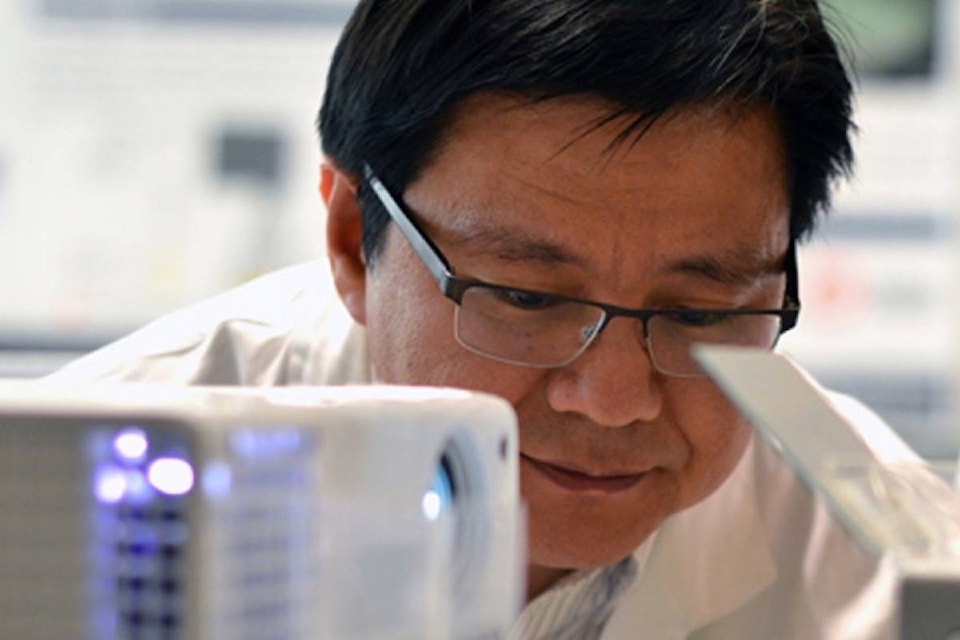Researchers from UBC’s Okanagan campus hope to make advances in tissue replacement and cancer research through a new technology that can produce living, 3D printed bio-tissues.
“One of the ultimate goals in biomedical engineering is to recreate viable, healthy and living tissues,” said engineering professor Keekyoung Kim, in a press release.
“The applications are staggering and could range from helping people suffering from ailments such as severe burns or organ failure to creating artificial tissues for research into diseases like cancer.”
RELATED: UBC OKANAGAN SEES UPTICK IN ENROLMENT
Much like weaving a tapestry, Kim and his team devised a method of using an inexpensive laser diode to solidify a water-based gel into a complex cross-linked pattern. The engineered tissue provides not only strength but also a structure where living cells can live and thrive.
The new system, called direct laser bio-printing, is able to print artificial tissue at a much finer resolution than what’s currently possible and can support healthy, living cells with 95 per cent effectiveness.
“These findings show a promising future for tissue engineering and medical research,” said Kim. “We’re already looking at applying the technology to cancer research.”
RELATED: STUDENTS UPSET WITH REACTION TO HARASSMENT ALLEGATIONS
According to Kim, there is considerable demand for biological models where researchers can grow cancer cells in three dimensions. He says that living cells are highly sensitive to chemical, mechanical, and biological conditions that are only present in a 3D environment.
Kim’s research, which was an interdisciplinary project from UBC Okanagan’s School of Engineering and Department of Chemistry, tested the artificial tissue’s ability to support healthy cells by building a pattern that encapsulated a commonly used line of breast cancer cells.
“The tissue pattern, which has extremely fine features and high cell viability, firmly demonstrates that our system has real potential to create functional, engineered tissue,” he said. “I’m excited by what this could bring to biomedical research.”
Kim worked with fellow engineering professor Jonathan Holzman and chemistry professor Fred Menard along with graduate students Zongje Wang and Xian Jin to develop the new system.
According to Holzman, this field of research is perfectly suited to interdisciplinary research.
“Bio-tissue printing applies knowledge in biology, chemistry, and microfabrication toward the health sciences,” said Holzman. “I think our recent success in bio-tissue printing came about from the multidisciplinary nature of our team.”
The research, published recently in Advanced Healthcare Materials, was supported by Discovery Grants from the Natural Sciences and Engineering Research Council of Canada (NSERC) and the Canadian Foundation for Innovation John R. Evans Leaders Opportunity Fund.
To report a typo, email: edit@kelownacapnews.com.
<>
kmichaels@kelownacapnews.com
Like us on and follow us on .



